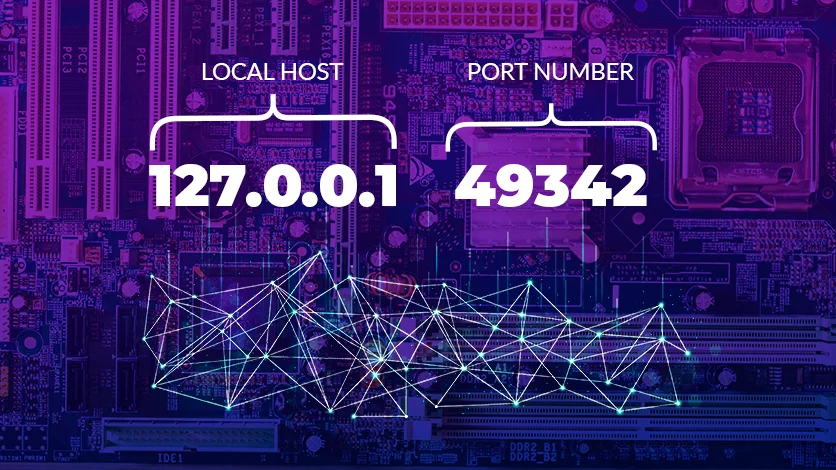Understanding 127.0.0.1:49342: The Localhost and Port 49342 Made sense of
The expression “127.0.0.1:49342” could appear to be secretive to those new to systems administration ideas; however, it assumes a pivotal role in neighborhood improvement and testing conditions. This article will dive into what 127.0.0.1 and port 49342 mean, how they are utilized, and why they are significant. By and by, you’ll have an exhaustive comprehension of these terms and their importance in the realm of systems administration and programming improvement.
What is 127.0.0.1?
The Idea of Localhost
127.0.0.1 is usually known as “localhost.” It is a loopback address, and that implies it guides back toward your own PC. At the point when you utilize 127.0.0.1, you are basically advising your framework to speak for itself. This address is essential for the IPv4 convention and is saved for loopback purposes.
Why utilize 127.0.0.1?
The principal justification behind utilizing 127.0.0.1 is to test and foster applications locally without requiring an outer organization association. This is particularly valuable for designers who need to run and test programming on their own machines prior to conveying it to a live audience.
How does 127.0.0.1 work?
At the point when you type 127.0.0.1 into your internet browser, your PC sends a request to itself. This permits you to get to privately facilitated sites, data sets, and applications. The loopback component is taken care of by the systems administration heap of your working framework, guaranteeing that the information bundles never leave your machine.
What is Port 49342?
Understanding ports in system administration
In systems administration, a port is a correspondence endpoint. Ports permit different administrations to run on a single IP address. Each port number relates to a particular service or application. For instance, HTTP ordinarily utilizes port 80, while HTTPS utilizes port 443.
The Meaning of Port 49342
Port 49342 is a powerfully distributed port, and that implies it isn’t saved for a particular help or convention. Dynamic or confidential ports range from 49152 to 65535 and are generally doled out briefly by the working framework for fleeting correspondences.
Normal Purposes of Port 49342
Port 49342 can be utilized for different purposes, including:
Nearby turn of events and testing
Impermanent associations for explicit applications
Custom administrations that require a one-of-a kind correspondence endpoint
How 127.0.0.1:49342 is utilized By and by
Neighborhood advancement conditions
Engineers frequently utilize 127.0.0.1:49342 to privately run and test their applications. This arrangement permits them to get to the application by means of an internet browser or other client without presenting it to the web. For instance, a web designer could run a neighborhood server on port 49342 and access it through http://127.0.0.1:49342.
Testing web applications
Utilizing 127.0.0.1:49342 is especially helpful for testing web applications. It permits engineers to guarantee their application capabilities accurately prior to sending them to a creation climate. This strategy helps get bugs and issues right off the bat in the improvement cycle.
Custom Application Advancement
Now and again, engineers make custom applications that require explicit ports for correspondence. Utilizing 127.0.0.1:49342 guarantees that these applications have an extraordinary endpoint for neighborhood testing and improvement.
Security Ramifications of Utilizing 127.0.0.1:49342
Advantages of Localhost Security
One of the essential security advantages of utilizing 127.0.0.1 is that it confines access to the neighborhood machine. This implies that any administrations running on 127.0.0.1:49342 are not available from outer organizations, decreasing the risk of outside assaults.
Expected Dangers and Alleviations
While utilizing 127.0.0.1 gives a layer of safety, it isn’t secure. Engineers ought to know about likely dangers, for example,
Nearby malware is taking advantage of weaknesses in the administrations running on localhost.
Misconfigurations that coincidentally open administrations to outside organizations.
Alleviations incorporate guaranteeing that nearby administrations are appropriately designed, kept up with the latest security fixes, and observed for any dubious action.
Investigating issues with 127.0.0.1:49342
Normal Issues
A few normal issues that designers could experience while utilizing 127.0.0.1:49342 include:
Port struggles: Another application may, as of now, be utilizing port 49342.
Firewall settings: Nearby firewalls could impede admittance to port 49342.
Misconfigurations: mistakes in the application or server setup.
Arrangements and best practices
To resolve these issues, engineers can:
Check for and resolve port contentions by utilizing apparatuses like ‘netstat’ or ‘lsof’.
Change firewall settings to permit traffic on port 49342.
audit and correct any design mistakes in their applications or servers.
End
127.0.0.1:49342 assumes an essential role in nearby events and testing conditions. By understanding how localhost and dynamic ports work, designers can really use this arrangement for building and testing applications. While there are some security considerations to keep in mind, the advantages of utilizing 127.0.0.1:49342 for nearby advancement are critical. Whether you are a carefully prepared engineer or simply beginning, getting a handle on the significance of 127.0.0.1 and port 49342 will upgrade your capacity to make hearty and secure applications.






























+ There are no comments
Add yours